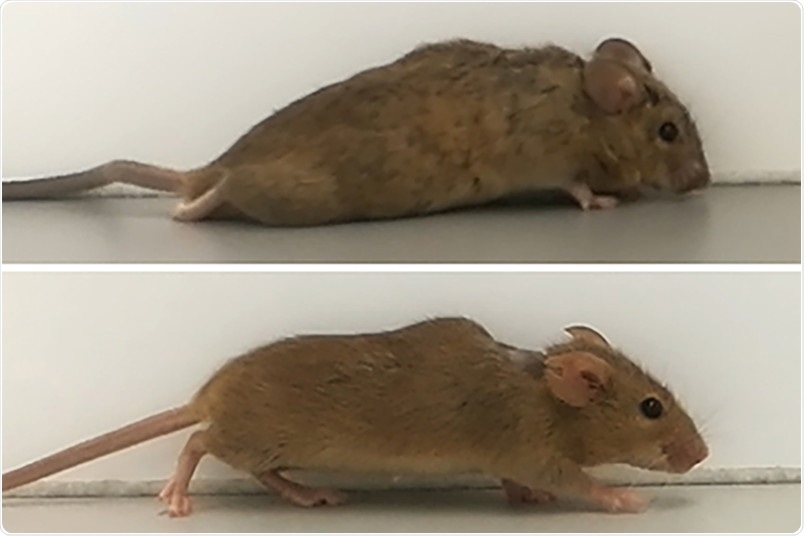For the first time, scientists have successfully used gene therapy to make mice walk again after these animals suffered a complete cross-sectional injury. The curative protein is produced by the nerve cells themselves.

Two to three weeks after treatment, the previously paralyzed mice began to walk. Image Credit: © Lehrstuhl für Zellphysiologie.
Paralysis caused by spinal cord damage has been permanent, to date. Now, for the first time, researchers from the Department for Cell Physiology at Ruhr-Universität Bochum (RUB) have succeeded in making paralyzed mice walk again with the help of a new therapeutic approach. The team was headed by Professor Dietmar Fischer.
The key lies in the hyper-interleukin-6 protein, which activates the nerve cells to regenerate, and the way it is delivered to the animals. The team published the study results in the Nature Communications journal on January 15th, 2021.
When the communication breaks down
Spinal cord injuries induced by traffic or sports accidents usually lead to irreparable disabilities, like paraplegia. Such disabilities are caused by damage to nerve fibers, the supposed axons, which carry information from the brain to the muscles and then back from the muscles and skin. This interaction is interrupted if these fibers are impaired due to illness or injury.
Since the damaged spinal cord axons cannot re-grow, the patients experience numbness and paralysis for a lifetime. So far, no treatment options are available to restore the lost functions in the affected patients.
Designer protein stimulates regeneration
In their quest for promising therapeutic methods, the Bochum team has been experimenting with a type of protein, called hyper-interleukin-6.
This is a so-called designer cytokine, which means it doesn’t occur like this in nature and has to be produced using genetic engineering.”
Dietmar Fischer, Professor, Ruhr-Universität Bochum
In a previous study, Fischer’s research team has already shown that hIL-6 can efficiently activate the regeneration of nerve cells in the visual system.
In the recent study, the Bochum group stimulated the nerve cells of the motor-sensory cortex to generate hyper-Interleukin-6 themselves. To achieve this, they employed viruses suited for gene therapy, which they administered into the brain region that can be accessed easily. There, the viruses send the blueprint to particular nerve cells, the so-called motoneurons, for protein production.
As these cells are also connected through axonal side branches to other nerve cells in other regions of the brain that are crucial for movement processes, like walking, the hyper-interleukin-6 was also directly delivered to these otherwise hard-to-access vital nerve cells and released there in a regulated manner.
Applied in one area, effective in several areas
Thus, gene therapy treatment of only a few nerve cells stimulated the axonal regeneration of various nerve cells in the brain and several motor tracts in the spinal cord simultaneously. Fischer continued, “Ultimately, this enabled the previously paralyzed animals that received this treatment to start walking after two to three weeks. This came as a great surprise to us at the beginning, as it had never been shown to be possible before after full paraplegia.”
Dietmar Fischer, Professor, Ruhr-Universität Bochum
The team is currently studying to what extent this method or similar techniques can be combined with other steps to further enhance the hyper-Interleukin-6 administration and achieve more functional improvements.
The researchers are investigating whether the hyper-interleukin-6 protein still has positive effects in mice, even if the injury took place several weeks before.
This aspect would be particularly relevant for application in humans. We are now breaking new scientific ground. These further experiments will show, among other things, whether it will be possible to transfer these new approaches to humans in the future.”
Dietmar Fischer, Professor, Ruhr-Universität Bochum
Source:
Journal reference:
Leibinger, M., et al. (2021) Transneuronal delivery of hyper-interleukin-6enables functional recovery after severe spinalcord injury in mice. Nature Communications. doi.org/10.1038/s41467-020-20112-4.